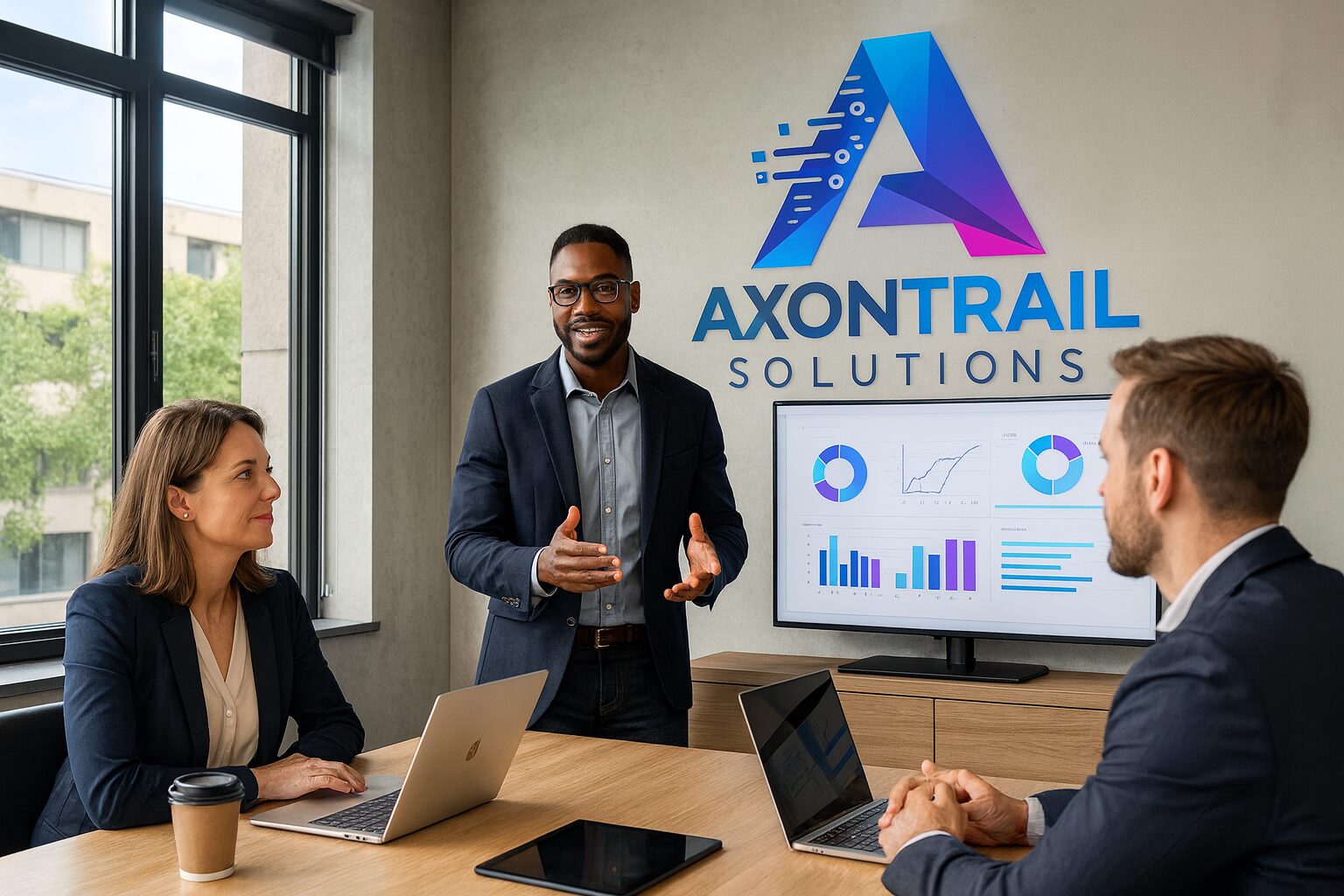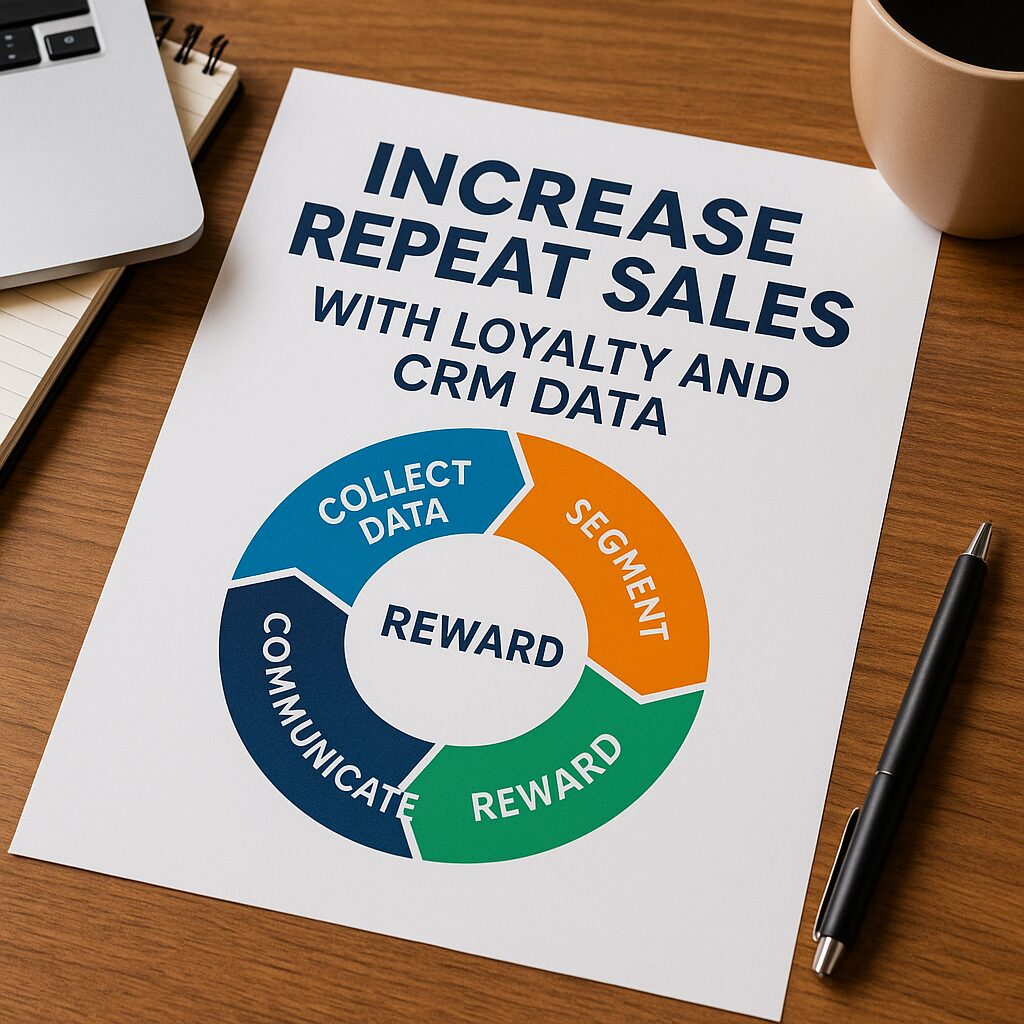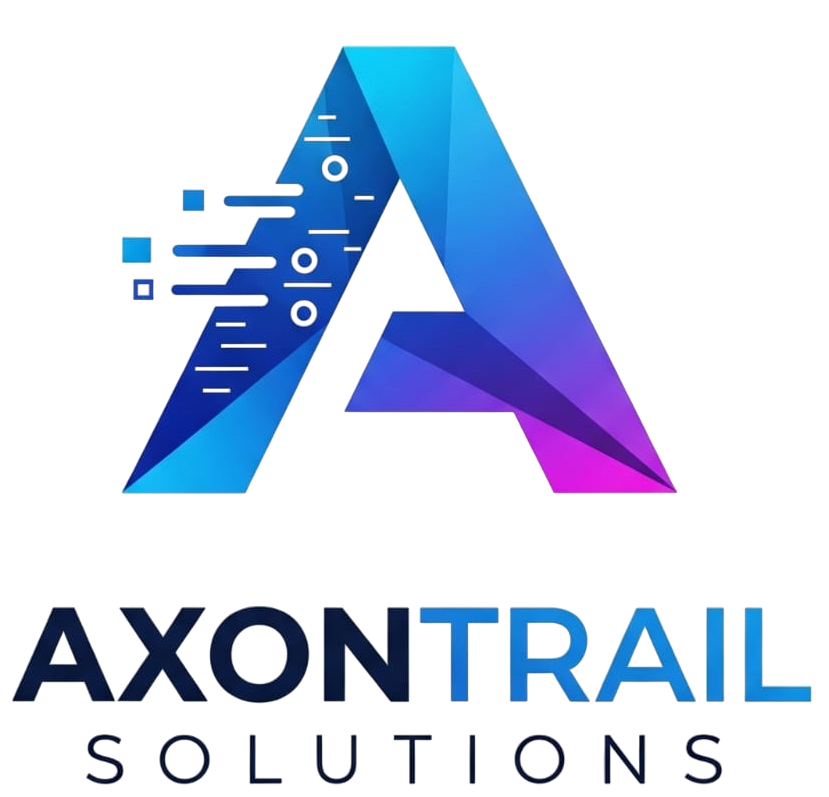
- August 27, 2025
- AxonTrail Editorial Team
- 0
Every business wants to keep customers coming back. While acquiring new customers is important, retaining existing ones is far more cost-effective. Studies show it can cost up to five times more to gain a new customer than to retain an old one. That’s why focusing on repeat purchases has become essential for sustainable growth. The best way to do this today is to increase repeat sales with loyalty and CRM data.
Loyalty programs encourage customers to return, while CRM (Customer Relationship Management) systems capture valuable insights about their preferences and behaviours. When combined, these tools become powerful engines for retention, personalisation, and long-term revenue growth. In this blog, we’ll explore how to increase repeat sales with loyalty and CRM data, breaking down strategies and practical steps that any business—whether retail, wholesale, or service-based—can implement immediately.
Why Repeat Sales Are More Valuable
Before diving into tactics to increase repeat sales with loyalty and CRM data, it’s important to understand why repeat customers are so valuable:
Higher lifetime value – Customers who return often spend more over time.
Lower acquisition cost – You don’t need to spend on expensive marketing campaigns to bring them back.
Word-of-mouth marketing – Satisfied repeat buyers are more likely to refer others.
Predictable revenue – Regular purchases create stability in cash flow.
When businesses focus on increasing loyalty and using CRM insights, they can systematically convert first-time buyers into long-term advocates.
The Role of Loyalty Programs
One of the best ways to increase repeat sales with loyalty and CRM data is by leveraging loyalty programs. These reward systems give customers an incentive to keep coming back.
Types of Loyalty Programs:
Points-Based Systems – Customers earn points with every purchase and redeem them for discounts or freebies.
Tiered Programs – Higher spending unlocks bigger rewards, motivating customers to stay engaged.
Subscription Models – Exclusive deals or benefits for members paying a recurring fee.
Gamified Programs – Challenges, badges, or competitions that make shopping fun.
When integrated into a CRM system, loyalty programs reveal which rewards motivate customers most, helping you fine-tune offers that drive repeat sales.
Why CRM Data Is a Game-Changer
CRM software stores all interactions customers have with your business—purchases, feedback, support requests, browsing history, and even email engagement. To increase repeat sales with loyalty and CRM data, you must tap into this treasure trove of insights.
With CRM, you can:
Segment customers based on buying frequency.
Identify high-value customers who deserve premium rewards.
Track purchase patterns to suggest relevant products.
Monitor inactive customers and win them back with targeted offers.
This data-driven approach ensures you’re not just guessing what customers want but delivering personalised experiences that encourage repeat sales.
Combining Loyalty and CRM: A Winning Strategy
The true power lies in integrating loyalty programs with CRM systems. Together, they provide a 360-degree view of customer behaviour. Here’s how businesses can increase repeat sales with loyalty and CRM data by combining the two:
Personalised Rewards – Use CRM insights to offer rewards that match individual preferences.
Triggered Campaigns – Send loyalty offers automatically when customers show signs of dropping off.
Cross-Selling & Upselling – Recommend complementary products based on past purchases.
Customer Journey Mapping – Track every interaction to ensure customers feel recognised and valued.
When customers feel understood and rewarded, they’re more likely to buy again and again.

Practical Steps to Increase Repeat Sales
Let’s break down a simple action plan to increase repeat sales with loyalty and CRM data:
Step 1: Collect Data Wisely
Start by integrating your sales, website, and loyalty program into your CRM. Capture data such as:
Purchase history
Preferred payment methods
Reward redemption habits
Communication preferences
Step 2: Segment Customers
Group customers into segments like:
Frequent buyers
Seasonal shoppers
Inactive customers
High-value spenders
Step 3: Tailor Offers
For frequent buyers: surprise discounts.
For inactive customers: win-back campaigns.
For high-value customers: exclusive VIP perks.
Step 4: Automate Communication
Use CRM workflows to send reminders, reward updates, and product suggestions.
Step 5: Analyse & Improve
Review which campaigns worked best. The ability to refine is what makes the combination of loyalty and CRM so powerful.
Example: Retail Business
Imagine a retail clothing store that wants to increase repeat sales with loyalty and CRM data.
CRM Data: Shows that 70% of women between 25–40 purchase accessories along with apparel.
Loyalty Program: Offers double points for accessory purchases during the festive season.
Result: Repeat sales spike as customers are encouraged to buy more with relevant offers.
This is how data-driven loyalty turns one-time shoppers into repeat customers.
Example: B2B Wholesaler
Even in B2B, the best way to increase repeat sales with loyalty and CRM data works brilliantly.
CRM Data: Reveals that customers who reorder within 30 days are more likely to stay long-term.
Loyalty Program: Offers a discount on early reorders.
Result: Businesses reorder faster, ensuring predictable revenue.
Common Mistakes to Avoid
While implementing strategies to increase repeat sales with loyalty and CRM data, businesses often make these mistakes:
Generic Rewards – Offering rewards that don’t align with customer interests.
Ignoring Data – Running loyalty programs without analysing CRM insights.
Overcomplicating Systems – Complex rewards discourage engagement.
Lack of Communication – Not reminding customers about their loyalty points.
Avoiding these pitfalls ensures maximum impact.
Future Trends in CRM and Loyalty
The future of customer retention is becoming even more exciting. To increase repeat sales with loyalty and CRM data, businesses will soon adopt:
AI-Powered Insights – Predicting what customers want before they ask.
Omnichannel Loyalty – Rewarding customers across online, offline, and mobile channels.
Hyper-Personalisation – Tailoring every interaction, from email subject lines to rewards.
Blockchain-Based Loyalty Points – Secure and transferable digital loyalty assets.
Embracing these innovations will give businesses an edge in customer retention.
Conclusion
In today’s competitive world, retaining customers is just as important as acquiring them. The most reliable method is to increase repeat sales with loyalty and CRM data. Loyalty programs motivate customers to come back, while CRM insights ensure every offer is personalised and relevant.
By combining these tools, businesses create a powerful ecosystem of rewards, insights, and seamless experiences. Whether you run a retail store, a wholesale business, or a service company, implementing this strategy can dramatically boost long-term profitability.
The time to act is now. Start building loyalty and using CRM data today—and watch your repeat sales grow tomorrow.
FAQs: Increase Repeat Sales with Loyalty and CRM Data
1. Why focus on repeat sales?
Because repeat customers are more profitable and cheaper to retain than new ones.
2. How do loyalty programs help?
They incentivise customers to return by offering rewards.
3. What role does CRM play?
CRM captures customer insights that allow personalisation of offers.
4. Can small businesses benefit?
Yes, even small shops can increase repeat sales with loyalty and CRM data.
5. What’s the simplest loyalty program to start with?
A points-based system tied to purchases.
6. How often should rewards be offered?
Regularly enough to keep customers engaged, but not so often that rewards lose value.
7. Can this work in B2B businesses?
Absolutely, B2B firms can reward reorders and loyalty just like B2C.
8. How to win back inactive customers?
Use CRM to identify them and loyalty points as an incentive to return.
9. Are there risks in loyalty programs?
Yes—poorly designed programs can cost more than they earn.
10. What’s the key to success?
Always use data to guide loyalty rewards and communication.
